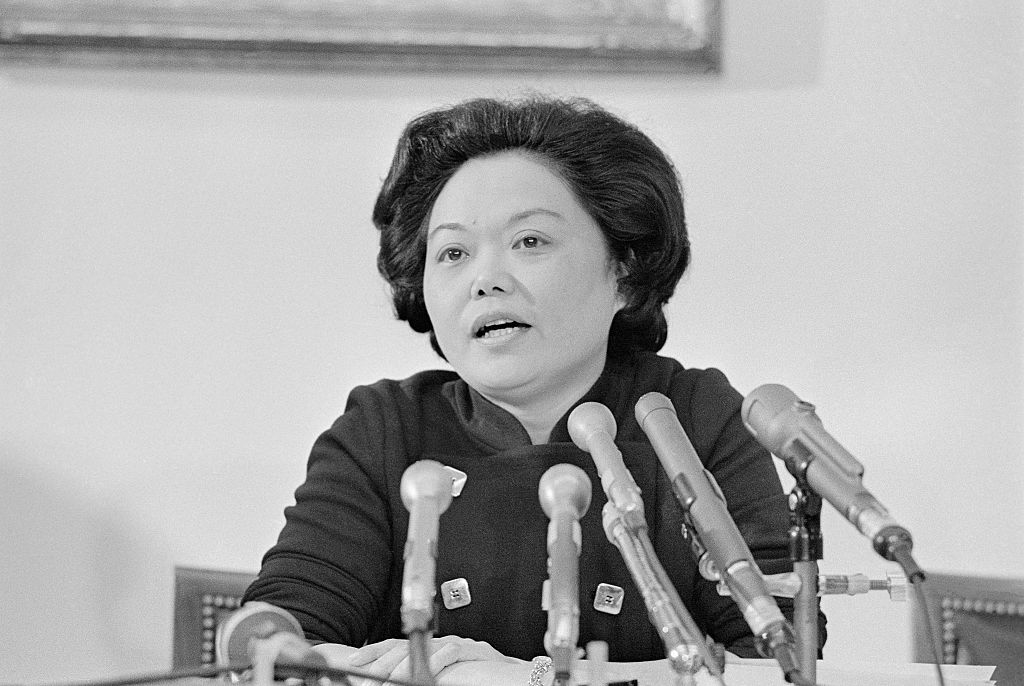One of the visionaries behind Title IX, Patsy Mink broke traditional gender boundaries, championed justice, and never wavered as an advocate and ally for social change.

Just over a year ago, Oregon women’s basketball player Sedona Prince posted on TikTok a side-by-side comparison of the NCAA weight room facilities for the men’s March Madness tournament versus for the women’s tournament. While not technically a violation of Title IX—the federal legislation passed in 1972 that mandates gender equality in education—it immediately went viral as a striking display of the inequities that still exist for female athletes even 50 years after the law’s passage.
Despite room for improvement, there is no doubt that Title IX has been one of the most transformational laws in history. While often associated with sports, the law states that no one can be discriminated against on the basis of sex in educational institutions that receive federal funding. Title IX is a broad guarantee, promoting gender equity in vocational, professional, graduate and public undergraduate admissions, scholarships at all levels, housing and, of course, sports. It also requires schools to prevent and remedy sexual harassment and sexual assault and prohibits discrimination against pregnant and parenting students. Title IX represented a tool for social change—letting women in, yes, but also expanding their dreams and greatly broadening their opportunities for future success.
One of the visionaries behind this groundbreaking piece of legislation was a fierce and fearless congresswoman from Hawaii, Patsy Takemoto Mink. As Congress’s first woman of color and a 1972 presidential aspirant, Mink served 24 years in Congress, from 1965–1977 and then again from 1990–2002.
In Congress, Mink spearheaded lawmaking from a feminist perspective to serve the diverse needs of diverse women. In addition to Title IX, she also advocated for broadened access to childcare, standards for early childhood education and economic support for parents, among other policies. She was relentless in pursuit of her policy agenda.
During the 1960s and ‘70s, Mink forged partnerships between congressional leaders and movement organizations, including the Women’s Equity Action League (WEAL), a spinoff from the National Organization for Women (NOW) that focused on educational and economic opportunity policies, and the Project on Equal Education Rights. This type of collaboration—fostered by feminist activists like Bernice Sandler and Arvonne Fraser—was critical for the future of Title IX which, once enacted, awoke a raging opposition, particularly from male athletic programs.

Many lobbied politicians to weaken the policy, if not eliminate it completely. Several members of the House and Senate repeatedly introduced amendments to curtail its scope. Thankfully, due to the collaboration between Mink and feminist organizers, a critical intervention in 1975 and vigilance by advocates over the years saved Title IX as a robust and expansive equality policy.
It is impossible to overstate the impact of Title IX. If there wasn’t a law mandating equality, we might still be stuck back somewhere in the 1970s. But mandating equality doesn’t mean that things are going to change in reality. The effectiveness of Title IX is only evident in the way its deployed and applied in real-life situations, such as arguing against unequal conditions and treatment to realize a vision of a better society.
While huge steps have been taken toward this vision—a federal court just found Hawaii schools potentially in violation of Title IX due to inadequate athletic facilities at a high school—inequalities do persist. Consider that female representation in Congress is at its all-time high: only 25 percent. Sedona Prince may have seen improvements in the workout facilities at this year’s Women’s NCAA Championships, but it’s disheartening to think that after 50 years of Title IX it took one viral video to realize those changes.
Once denied entrance to medical school because of female student quotas, Patsy Mink drew on that experience to go to law school, run for local and national office and achieve one of the most far-reaching and important pieces of equity legislation to date—on par with the Civil Rights Act. Across nearly 50 years in public life, Mink broke traditional gender boundaries, championed peace, the environment, equality and social justice, and never wavered as an advocate and ally for social change.
Shortly after her death in 2002, Title IX was renamed the Patsy T. Mink Equal Opportunity in Education Act in fitting tribute to an innovative, determined leader who changed the trajectory for girls and young women for generations to come.
Up next:





